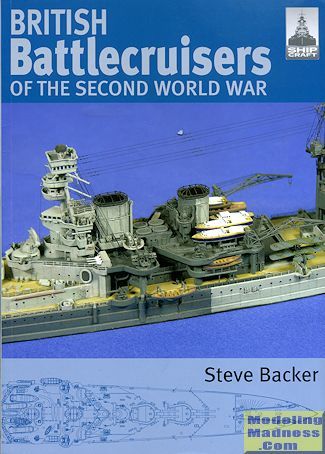 Once
upon a time, there was a British admiral who put forth a design for a warship
that drastically changed how the world looked at and built capital ships. This
man was 'Jackie' Fischer and his design was the all big gun battleship, the HMS
Dreadnaught. Prior to this battleships had a variety of armament sizes, each for
battle against a specific type of ship or mission. After the Dreadnaught, all
battleships had a single, large caliber main armament.
Once
upon a time, there was a British admiral who put forth a design for a warship
that drastically changed how the world looked at and built capital ships. This
man was 'Jackie' Fischer and his design was the all big gun battleship, the HMS
Dreadnaught. Prior to this battleships had a variety of armament sizes, each for
battle against a specific type of ship or mission. After the Dreadnaught, all
battleships had a single, large caliber main armament.
But he thought beyond this type of ship and his next
focus was on a ship that was as heavily armed as a battleship, but as fast as a
cruiser. The plan here was to produce a ship that could operate against surface
raiders and if any of the opposing battleships turned up, would be fast enough
to get out of harm's way. These ships would be quite lightly armored compared to
battleships as they would not be fighting the big guns, but still needed enough
armor to take on cruisers. Thus was born the battlecruiser.
Fischer was enamoured with the type and his enthusiasm
spilled over onto his successors. Before WWI, not only Britain, but also Germany
was building battle cruisers. German battlecruisers were not quite so heavily
armed, more heavily armored and a bit slower. Early in the war, those few
occasions where British battlecruisers met German ships, they did well. However,
at the 'big one' at Jutland in 1916, these ships were used against German
battleships, a task for which they were not designed and three of them were lost
in quick succession.
It was quite obvious that the design was flawed and
after WWI only three ships of this class remained in the Royal Navy. These ships
were more heavily armored than their predecessors. They were the Repulse, Renown
and the Hood. The Repulse and Renown were sister ships while the Hood was the
lone ship of its class to be built as a battle cruiser. One other was completed
as HMS Eagle, an aircraft carrier. These three ships entered WWII and had quite
different histories. The Hood was destroyed by the Bismark, the Repulse was sunk
by Japanese torpedo bombers early in the war, and the Repulse spent most of her
war mostly escorting convoys. She was the only one to survive the conflict but
was soon scrapped after the end of the war.
This particular book covers, in considerable detail, the
history of the battlecruiser and the continuing development of these three ships
in particular. There are tons of line drawings showing how they changed over the
years as well as a goodly number of superb period photos. A rather large section
of the book is on building models of these ships. First off, every known ship
kit of these three subjects is covered, giving the good and the bad about these
items. Then there is a showcase that provides a look at what several modelers
have accomplished when building kits of these ships. To say that none are out of
the box would be an understatement, but all are truly superb. Another nice
section is on the various camouflage schemes worn by these ships.
It all makes for an excellent reference not only for the
enthusiast, but especially for the modeler who wants a history of the ships,
photos, drawings and additional information to help with their projects. A book
I found particularly interesting and one that I can recommend to you.
May 2015
Review book courtesy of
Casemate Publishing, where you can order your copy of this and many other superb books
and DVDs. You can get this particular book
at this link.
If you would like your product reviewed fairly and quickly, please
contact
me or see other details in the Note to
Contributors.
 Once
upon a time, there was a British admiral who put forth a design for a warship
that drastically changed how the world looked at and built capital ships. This
man was 'Jackie' Fischer and his design was the all big gun battleship, the HMS
Dreadnaught. Prior to this battleships had a variety of armament sizes, each for
battle against a specific type of ship or mission. After the Dreadnaught, all
battleships had a single, large caliber main armament.
Once
upon a time, there was a British admiral who put forth a design for a warship
that drastically changed how the world looked at and built capital ships. This
man was 'Jackie' Fischer and his design was the all big gun battleship, the HMS
Dreadnaught. Prior to this battleships had a variety of armament sizes, each for
battle against a specific type of ship or mission. After the Dreadnaught, all
battleships had a single, large caliber main armament.